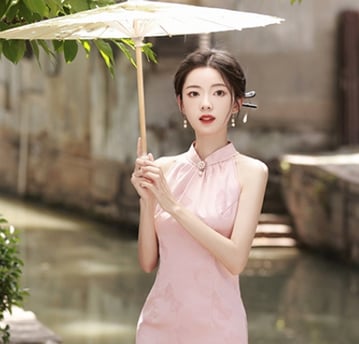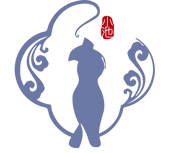What are the types of cheongsam collars
This piece delves into the rich history and diverse designs of qipao collars, tracing their evolution from the Qing Dynasty’s rigid, high-standing collars to the delicate waterdrop collars of the 1930s and beyond.
QIPAO HISTORY
6/18/20252 min read


A Historical Tapestry: From Pragmatism to Poetry
The origins of the qipao collar date back to the Qing Dynasty (1644–1912), when Manchu rulers imposed their clothing styles on the Han Chinese population. Early iterations featured high, upright collars (立领, lìlǐng), designed to project dignity and modesty. These collars were often stiffened with horsehair or wire, creating a structured silhouette that framed the face and neck.
By the 1920s and 1930s, during the Republican era, the qipao underwent a dramatic transformation. Influenced by Western fashion and the New Culture Movement, collars softened in both shape and demeanor. The 水滴领 (shuǐdī lǐng, "waterdrop collar") emerged—a delicate, rounded collar that dipped slightly at the front, echoing the era’s embrace of femininity and grace. This period marked the qipao’s golden age, with collars becoming a canvas for artistic expression, often embroidered with floral motifs or piped in contrasting fabrics.
Anatomy of a Collar: Types and Design
Qipao collars vary widely in style, each serving a distinct aesthetic and functional purpose:
The Classic Stand Collar (立领):
Characteristics: High, rigid, and close-fitting, typically ranging from 1.5 to 3 inches in height.
Symbolism: Embodies tradition, restraint, and intellectual elegance. Often favored in formal or winter qipao for its ability to convey authority.
Modern Twist: Designers now experiment with asymmetrical heights or sheer fabrics to soften its severity.
The Waterdrop Collar (水滴领):
Characteristics: A rounded collar with a subtle V-shaped dip at the center front, resembling a teardrop.
Symbolism: Reflects the harmonious blend of modesty and allure, popularized during the 1930s as a symbol of progressive femininity.
Modern Twist: Contemporary versions may feature lace inserts or beaded embellishments along the dip.
The Phoenix Collar (凤仙领):
Characteristics: A low, flared collar that cascades gently over the shoulders, resembling phoenix wings.
Symbolism: Associated with mythical elegance and romance, often seen in bridal qipao.
Modern Twist: Paired with sheer sleeves or metallic threadwork for a dreamy effect.
The Mandarin Collar:
Characteristics: A short, unfolded collar (1–2 inches) inspired by Ming Dynasty attire.
Symbolism: A nod to historical revivalism, favored in minimalist or avant-garde qipao designs.
Modern Twist: Combined with contrasting fabrics or bold colors for a contemporary edge.
Cultural Significance: More Than Just Fabric
The qipao collar is not merely a structural element—it is a cultural narrative. In traditional Chinese philosophy, the neck symbolizes the connection between heaven and earth, making the collar a metaphor for spiritual alignment. The collar’s height and shape also historically reflected social status: elaborate collars were reserved for nobility, while simpler designs denoted modesty.
Today, the collar serves as a bridge between generations. Artisans often incorporate family crests or embroidery techniques passed down through lineages, transforming each qipao into a wearable heirloom.
Modern Innovations: Collars Reimagined
Contemporary designers are pushing the boundaries of collar design, blending tradition with avant-garde aesthetics:
Deconstructed Collars: Fragmented or layered collars that defy symmetry.
Sustainable Materials: Collars crafted from recycled silks or bamboo blends.
Tech Integration: LED-lit collars for futuristic runway shows.
The qipao collar is a microcosm of Chinese ingenuity—a testament to how a single detail can encapsulate centuries of history, artistry, and identity. Whether adorned with intricate embroidery or stripped bare in minimalist elegance, the collar remains a powerful emblem of feminine strength and cultural pride. As fashion evolves, one thing endures: the qipao’s collar will forever frame the face of timeless beauty.
The qipao, or cheongsam, is a iconic symbol of Chinese fashion, celebrated globally for its ability to merge traditional aesthetics with modern sophistication. Central to its allure is the collar—a small yet pivotal detail that speaks volumes about cultural history, craftsmanship, and the evolution of female elegance. This article explores the diverse world of qipao collars, tracing their design evolution and cultural significance.


